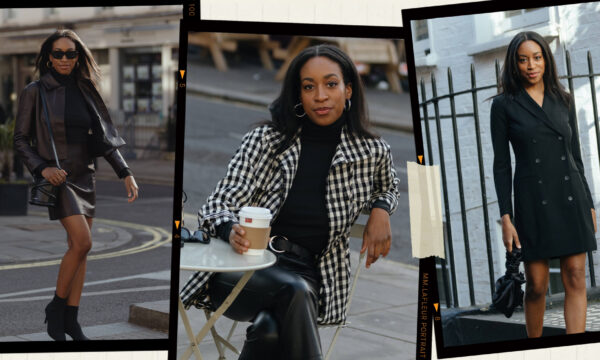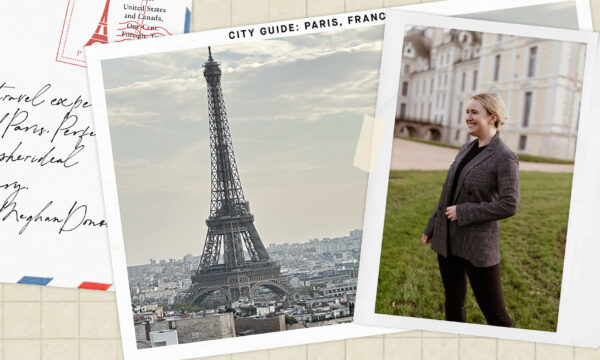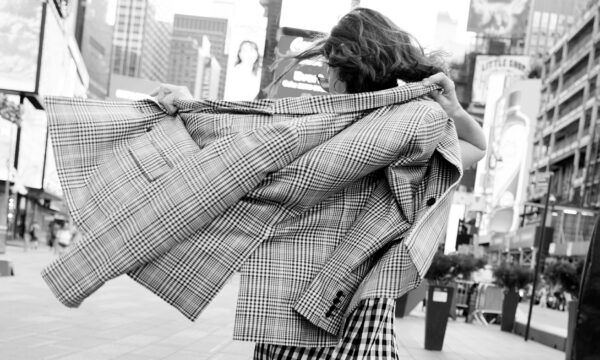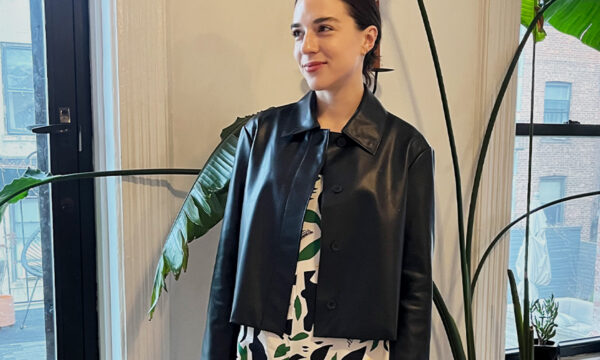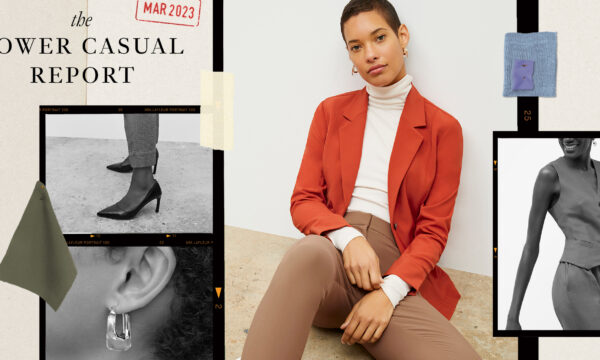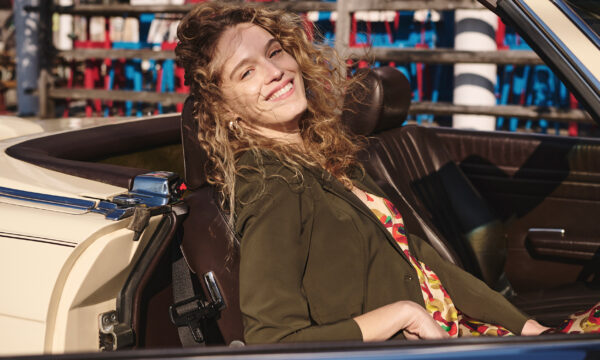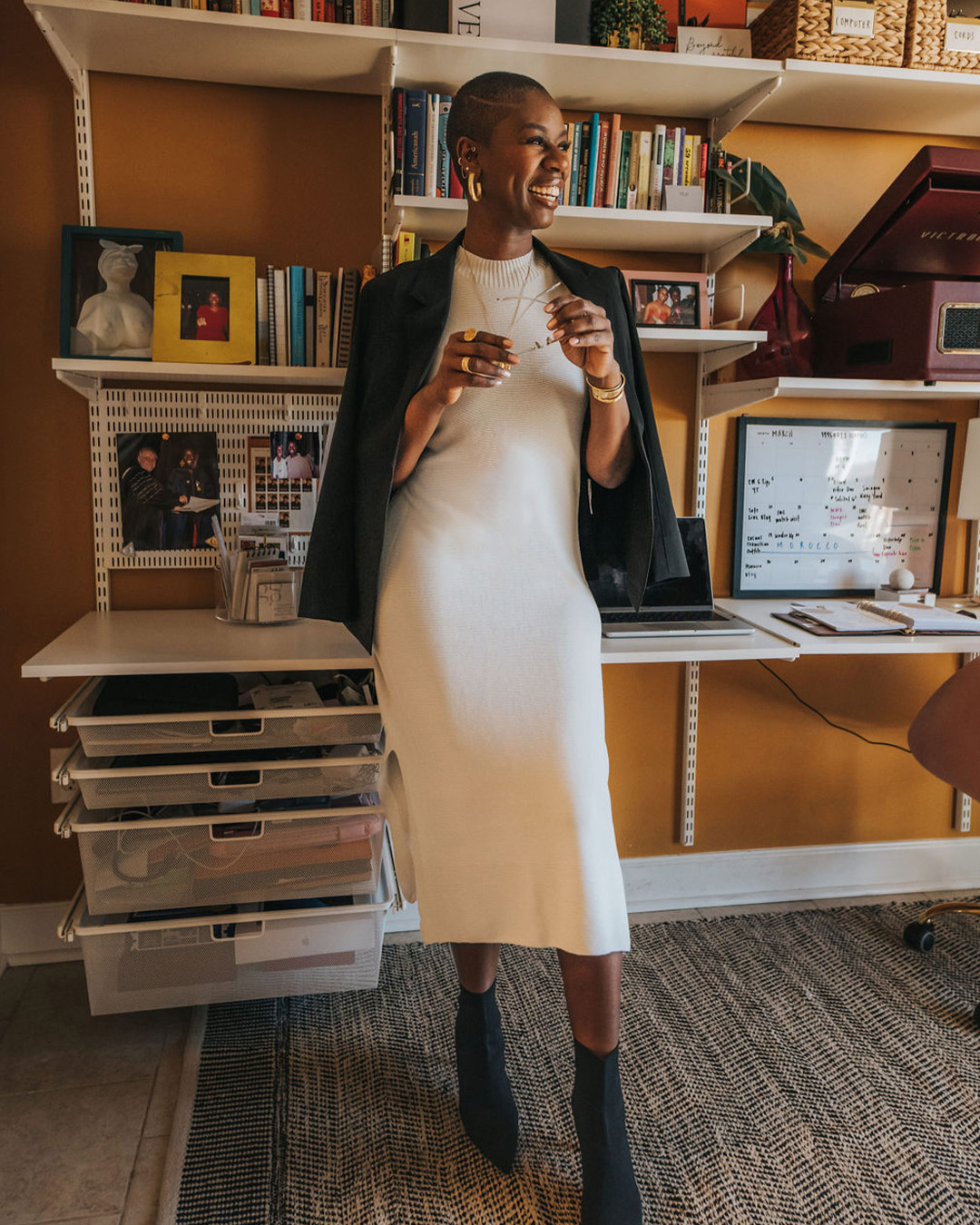
Shop This Look
For Tashira Halyard, Self-Expression Through Style Is an Act of Resistance
The fashion expert behind our latest capsule shares a glimpse into her closet, her career, and her brain.
From her inspirational Instagram page and YouTube channel to her style book and podcast, Tashira has an illustrious online presence—but she didn’t always work in fashion. In fact, her career began in education before taking a turn into law and public policy. “I’d always wanted to have a career where I was working with or advocating for children, and specifically children of color,” she says. “So for my first job out of law school, I was an attorney guardian ad litem, which means I represented kids in foster care or guardianship. That built my expertise around kids of color in public systems, specifically Black girls, involved in systems like child welfare and juvenile justice.”
Tashira left her public policy career in 2017, when her breast cancer diagnosis forced her to confront the toxic relationship she had with her job. She spent a few years working in luxury fashion—which she describes as the best job she ever had—before deciding to go out on her own and work on content creation full-time. Today, she uses her platform not only to share her styling expertise, but also to highlight the power that fashion can have.
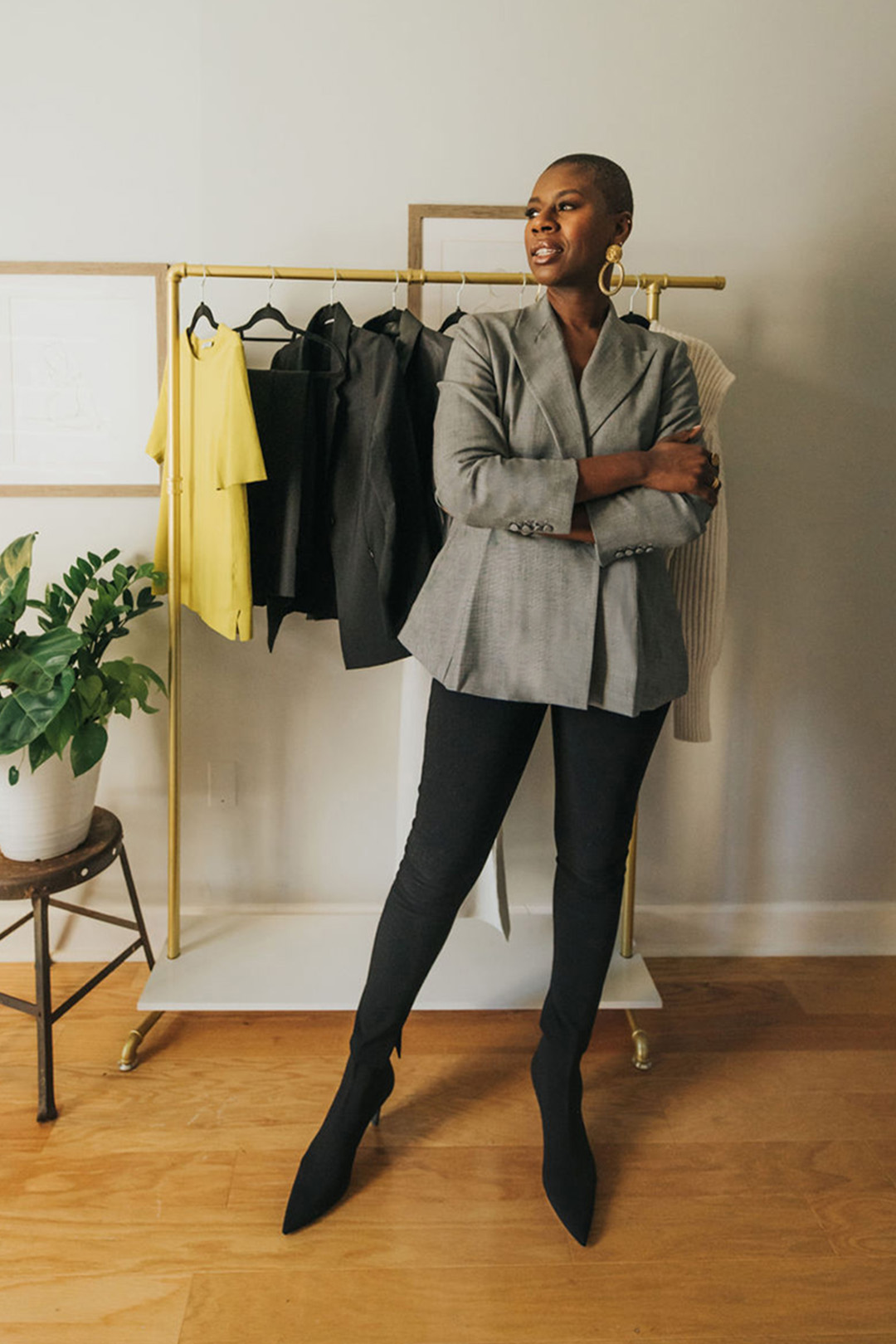
“So many women are taught to suppress our style at work,” Tashira explains. “If you’re a Black woman, you’re taught that you have to be very conservative and respectable in a particular way. I have always had a problem with that. I’ve always pushed the boundary, either with the piercings, or the tattoos, or the bright colors. It can be an act of resistance to show up as our true, full selves in any environment—including work.”
I had the chance to chat with Tashira about her career pivot, the hardest thing about running her own business, her approach to personal style, and so much more. Read our full conversation below.
Want more M Dash?
Sign up for our weekly newsletter.
Thank you!
Her Closet
How would you describe your personal style?
I have an e-book called How to Declutter Your Wardrobe and Curate a Style You Love, and in it, I outline four or five “style pillars.” I’m squarely part of the “elevated simplicity” style pillar, which means I like things that are more on the wardrobe-essential side, and I privilege quality over quantity.
I’m not really a trend person, either. I may style my pieces in a more trend-forward way, but the core of my wardrobe is really the essentials. The elevated part comes from the fact that, if I’m choosing an essential item, I’m going to choose the one that has a little bit of a twist. I’m going to choose the blazer that has the exaggerated sleeves, or the deconstructed trench coat. But at the end of the day, they’re still core, essential pieces that I wear over and over again. Also, I’m the queen of neutrals. I tend to love that neutral, very Parisian style.
What advice would you give someone who’s trying to figure out what their personal style is?
The first step is to spend some time decluttering—because, to be honest, people would be a lot clearer on their style if they didn’t have so much shit. We live in an era of mass consumption, of new fast fashion trends popping up every five minutes—and less than that if you’re on social media. Someone is always encouraging you to consume, consume, consume, without being intentional about it.
One phrase I love is “shopping with intention.” Another way to say it is “conscious consumption.” Before we can know our style, we have to get all of the shit out of our closets. Once we decide what to keep and what to get rid of, hopefully, we’ll be left with a roadmap of our true style.
My other advice is for people to get clear on their lifestyle—their true lifestyle. I talk on YouTube about how many of us are shopping for a fantasy lifestyle. We have all of these glamorous pieces in our wardrobes, yet we wear a uniform five days a week. We’ve got 30 pairs of stilettos, but we wear scrubs and clogs to work. The pieces we have aren’t getting any mileage, because we’re not thinking intentionally about our true lifestyle, and about the pieces that are going to make us feel best day to day.
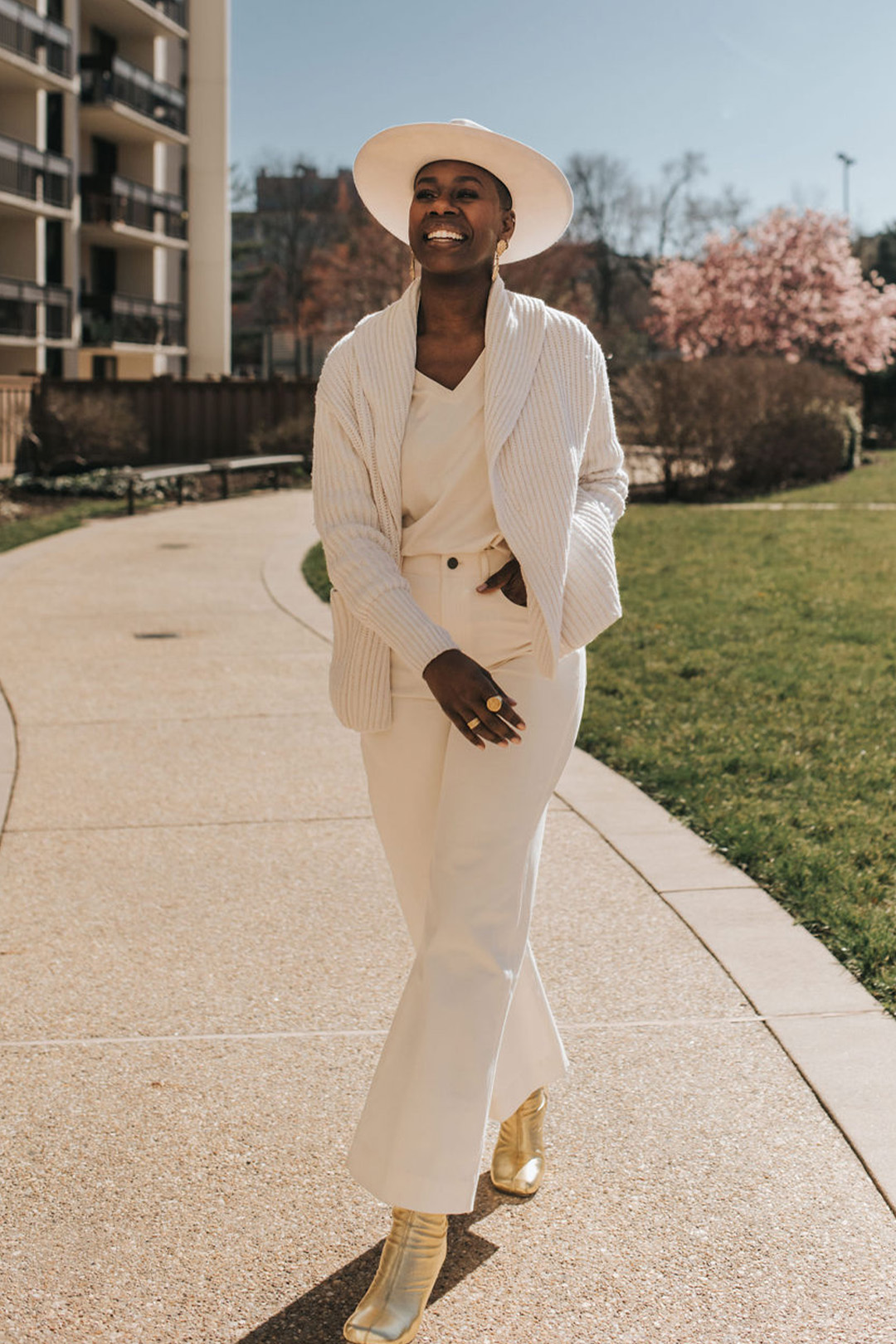
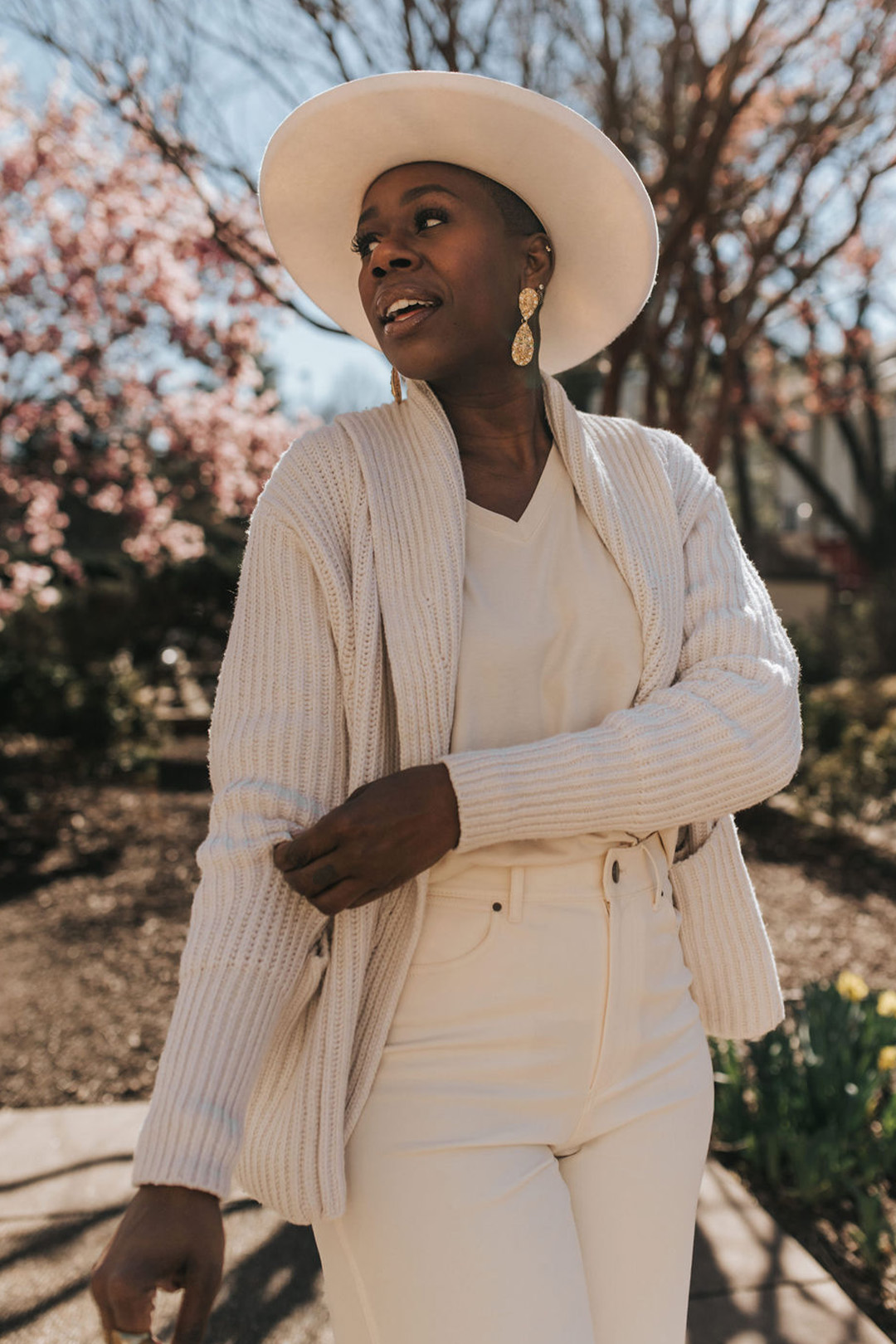
What’s the first thing you think about when you’re deciding what you’re going to wear each day?
It’s usually accessories. I have been obsessed with jewelry, handbags, and belts for long as I can remember. I spent some time working at Yves Saint Laurent, and these French codes are part of the DNA of the brand. When I was there, I realized that I could wear the same thing every day. It really is more about how I adorn myself—the earrings that I wear, the eyewear that I choose. And so, when I get dressed, my first thought isn’t about the core garment, it’s about asking myself, “What shoes do I want to wear today? What handbag am I feeling today?” From there, I just fill in the pieces, because everything I have is interchangeable anyway.
During the pandemic, M.M. developed the concept of Power Casual, which we like to define as the clothing equivalent of work-life balance. Do you feel like your wardrobe went through an evolution throughout Covid? How are you dressing now?
The important thing for me during Covid was that I got dressed. Loungewear was the predominant staple in many wardrobes—everyone was wearing jogging pants, and maybe a cute top for their Zoom calls—but I really wanted to make a point of getting dressed every single day.
Since that time, I’ve noticed the mistakes that I made prior to working for myself. It was the fact that I had two different wardrobes. I know Power Casual is about having these core pieces that go from work to weekend, and I think about that all the time when I’m giving style advice. These days, even suiting has become something you can wear on the weekend—a suit with a pair of sneakers, or a great blazer draped over your shoulders with a pair of jeans.
Clothes are critical to our understanding of who we are and the way that we want to present ourselves to the world. Power Casual is a way to achieve that without having to consume double-time—without having to have separate work clothes and regular clothes.

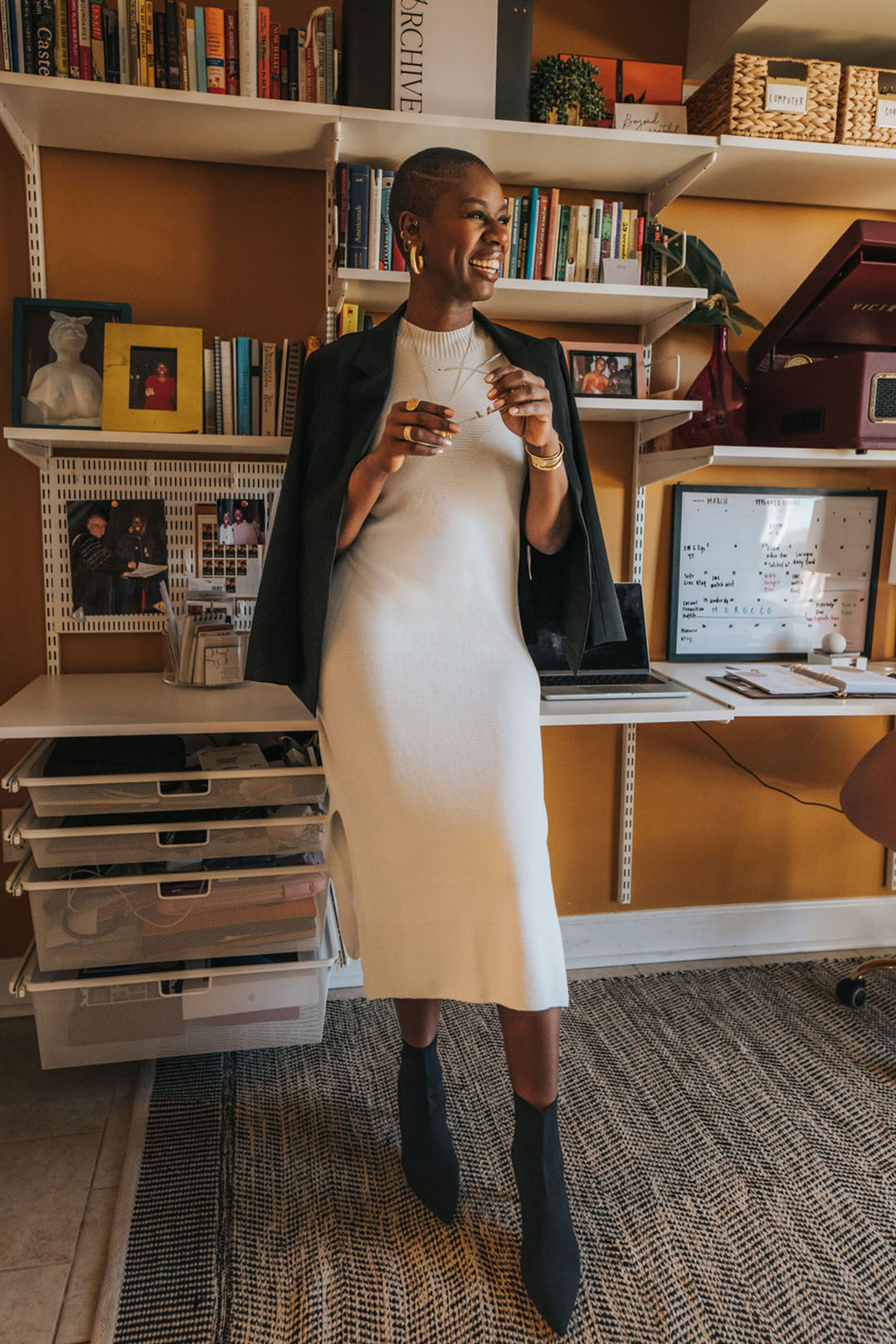
Do you have a go-to capsule that you rely on in your everyday life?
Yes. I found out about the capsule wardrobe concept five or so years ago, and it’s become the lens through which I see my wardrobe. I’m a true fan. Capsules are the source of quite a bit of my content. For me, it’s not about sheer minimalism, because I’m not a minimalist. It’s about ensuring that I’m shopping with intention, but also that I’m maximizing the pieces that I have and love.
I have a friend who’s a stylist, and she often talks about how, 50 years ago, we weren’t shopping like we do now. If your garment had a hole in it, the last thing you would think to do is throw it out. You would just sew it up. You wore your garments until they literally fell apart. I think that’s the most important thing about a capsule—that I am getting miles out of my pieces. It also makes getting dressed so much easier.
What drew you to the pieces you selected for your M.M.LaFleur capsule?
My whole philosophy behind this capsule was to bring some edge to the pieces. I think there are a lot of people shopping at M.M. who come from a traditional work environment. I’m coming to the brand as a solopreneur who can wear whatever I want every day, so I can probably see a little bit more clearly how these pieces, which some may think are more traditional, can be worn in a myriad of ways.
When I think about my capsules, I like to have at least one color. I’ve always been drawn to that really pretty chartreuse color, and I felt like it could translate throughout the entire collection.
I also really, really love the Felda dress, and I think it could look good on all body types, especially if it’s belted. I styled it with a pair of cowboy boots to make it a little bit more edgy.
The Milo jeans in the color tusk feel like butter and are such a great twist on denim. I opted for a tonal look and paired them with the Asher T-shirt in ivory. This look is such a great pop as we’re transitioning to spring.
Then there was the OrigamiTech suit with the elastic-waist Colby pants. That technical fabric is unique for suiting, and it could be more comfortable for people who are not accustomed to wearing suits. It also gives you more versatility than structured suiting. I styled it with a graphic tee underneath and a pair of sneakers for the weekend.
Her Career
You’ve had a varied career with lots of twists and turns—from law and public policy to fashion and entrepreneurship. What made you decide to pivot?
When I got breast cancer, I was working in public policy, and I realized that I had a very toxic relationship with work. I delayed my surgery because of a conference I was planning. I was writing grant reports while I was receiving chemo. It just was really, really toxic.
I also wanted a job where I wouldn’t feel like I had to take my work home, where I wasn’t going to be crippled with imposter syndrome. I wanted a job where I could feel comfortable as a Black, queer woman and just show up and be myself.
I had this personal brand that I’d started as I was graduating law school in 2011. It was gaining popularity, and I felt like I could be open and vulnerable with my online community. I decided I wanted to take Politics and Fashion from a hobby to a career. At that point, I probably had around 5,000 followers on Instagram, and no YouTube channel, so I had to figure out how I was going to do that—because, of course, I couldn’t pay all of my bills with 5,000 followers. That led me to luxury retail: I worked at Yves Saint Laurent, which was the best job I ever had. I absolutely loved it. I felt like I got a graduate degree in merchandising and fashion design working there. All of my colleagues were so well-versed in fashion; I felt like I had found my people. During that time, I continued to build my personal brand, and it got to a point where I could buy myself out of my full-time job. I had to decide if I was going to stay or go out on my own.
I made the leap in December of 2020, and right away, every single platform started to blossom—partly because I gave myself the gift of time. I had the ability to think a lot more deliberately about the content I was putting out and what it would mean to be a mission-driven brand. I’m happy to say that since I left, things have just continued to accelerate. Now, I have a podcast, and I’m on YouTube. I also have a private-paid community that receives exclusive content. I still do a bit of consulting with clients from my previous life—social justice-oriented work that I love and probably will never not do.
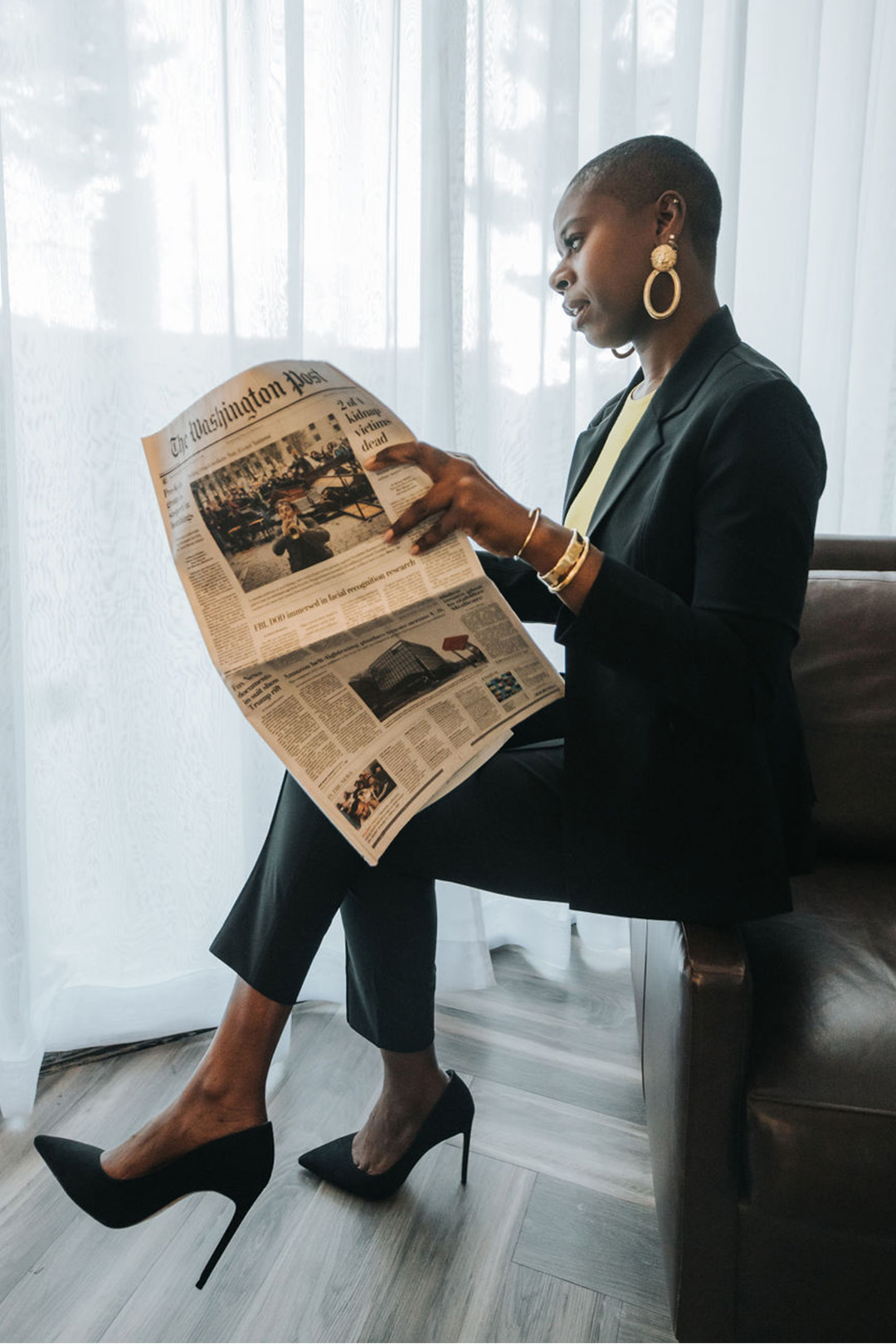
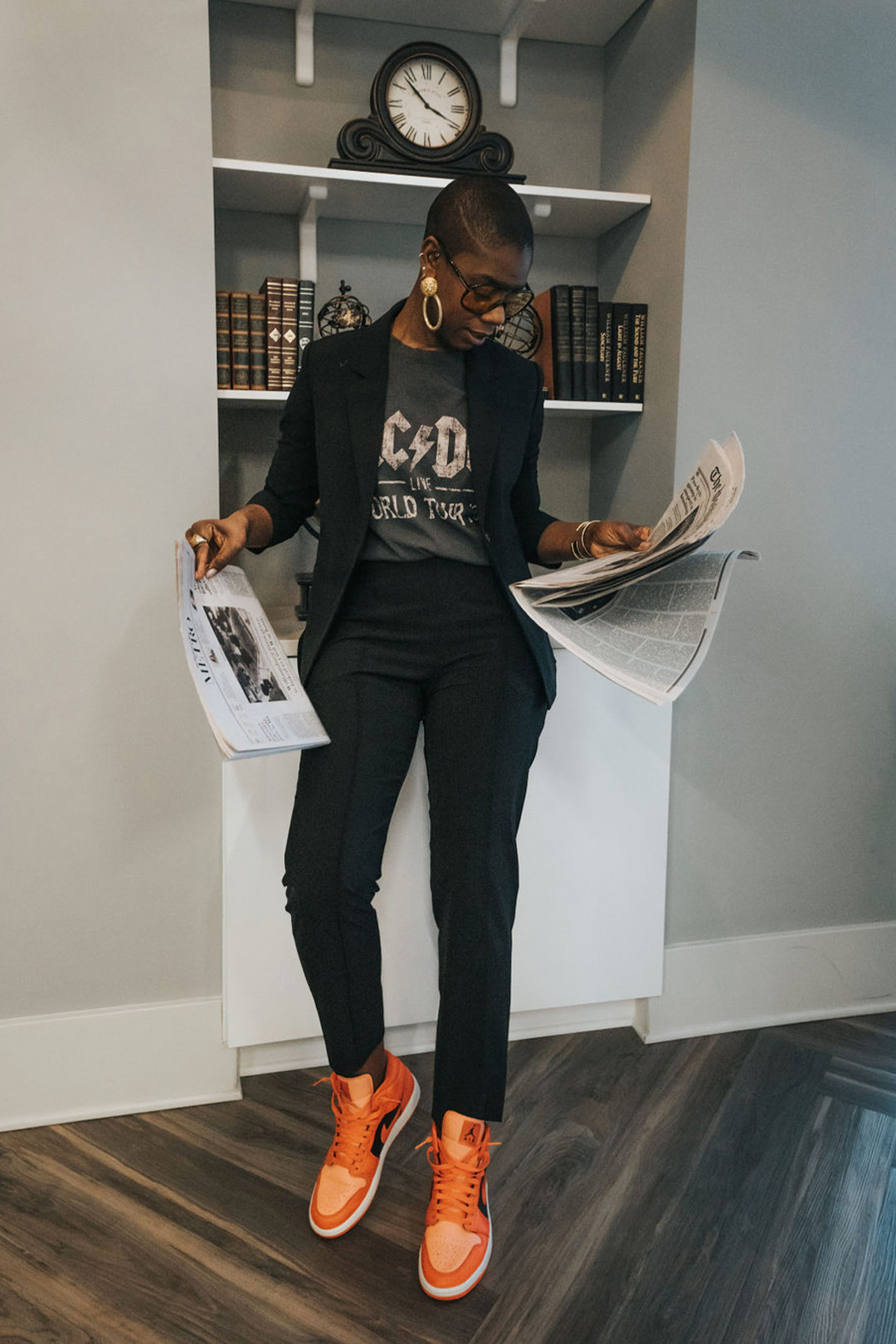
What has been the hardest thing about going out on your own and running your business?
Especially during this era of the “great exit” and “quiet quitting,” entrepreneurship can be idealized. I come from a very toxic work culture, and working for myself is a hundred thousand times better than that. But I have to check myself sometimes, because I have brought some of those same traits to working for myself. There’s no reason for me to be working 15-hour days; there’s no reason to work seven days a week—but that’s what I’ve been taught. And so a lot of my work on myself has been about getting rid of those toxic work habits and enjoying what I have worked so hard for.
I think that when you do what you love, it never feels like work—trite, but true. I have had seasons of intense overwhelm, and I had to sit back and say, I’m doing this to myself. No one is going to give me a bad performance review. I’m not going to get fired. My anxiety is only high because of the expectations that I put on myself. And so I’ve had to continuously redefine what success actually means.
Her Brain
What does success look like for you right now?
Lately, I’ve been having a lot of conversations about the soft life. It’s a term being used on social media that was created by a Nigerian influencer as a way to talk about the privilege of being able to farm out certain parts of your life. Having someone cook for you, having someone clean your home, and just really being able to luxuriate in the comfort of giving yourself your time back. It’s the inverse of hustle culture.
For me, that is success—to live a soft life without feeling like I am a victim to the materialistic trappings that can come along with it. Success, for me, is being able to take a sabbatical and not feel like I have to create content or answer emails while I’m there. Success feels like being able to buy my mom a new dress, just because. It looks like being able to spend time with my grandparents, who stay with me for a month or two every year—and because I work for myself, at home, I can cook them breakfast, lunch, and dinner. The fact that my grandparents are spending these last days of their life with me is such a measurement of success.
It has little to do with financial gain. It’s important, because you’ve got to pay to live—but the things that are most meaningful to me have nothing to do with what society tells us are markers of success. I’ve had those things, and I’ve not been happy.


Your handle on Instagram is @politicsandfshn. Where do you see politics and fashion intersecting? Why is it important to talk about them in tandem with each other?
Number one, it’s about shopping with intention, or conscious consumption—being aware of how we’re bringing pieces into our lives. It’s also about holding space for people at the margins to be able to express themselves. I think a lot about the constraints that women, and Black women in particular, face—about how they show up in workspaces and what they are and are not allowed to do, to say, and to present. That very much applies to people who are outside of the gender binary as well.
It’s also about the politics of fashion. How are things made? Where are they coming from? How often are we buying new things? Are we appreciating what we have or not?
Another facet that I talk a lot about is the politics of adornment. I was raised by my grandparents, and my grandmother and all of her sisters were domestic workers. None of them were formally educated beyond the sixth or seventh grade. Despite that, I grew up with women who always had their hair and nails done. They would put on their Sunday best and really took pride in their appearance. I saw that as an act of resistance. Everything around me tells me that I should not be cared about, that I am not beautiful. Yet, here I am, standing boldly and proudly in all of my glory. That’s always been a really important message for me.
If the you from 10 years ago could see where you are today, what do you think she would say?
She would be like, “Oh, girl, you did that!”
The thing I’m the most proud of is my resilience. I can take a licking and keep on ticking. I’ve been through some shit—and I don’t say that to lean into a strong woman trope, I just mean that I know there is nothing I can’t overcome. There is nothing on this earth that I can’t achieve if I put my mind to it. I understand that at my core.
10 years ago, I remained steadfast in this content thing, and it was mine. It was my creative expression, and it allowed me to explore parts of myself that I had never explored before. To see myself now, doing this as a profession and earning money from it—and also taking parts of my policy career with me and doing everything from a mission-driven place—that is one of the biggest gifts I’ve ever given myself. I’m proud of myself, and I definitely think that 30-year-old Tashira would be inspired and proud, too.





